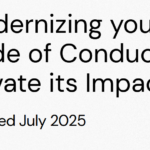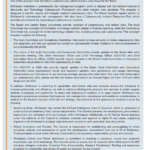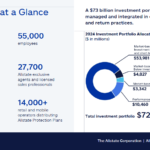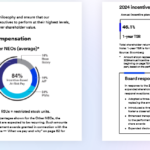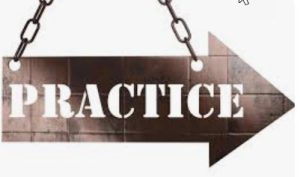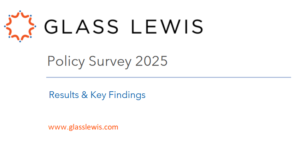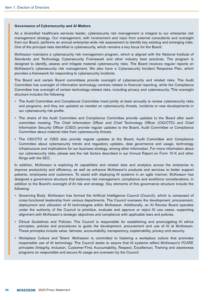This was such a great panel – featuring WilmerHale’s Lily Brown and Edward Jones’ Keir Gumbs – that I’ve decided to highlight their commentary in a series of blogs. This particular blog addresses the question of: “When you’re working on brand new disclosure – some new development or a new rule requirement – what is your recommended process for starting? Bulleted outlines, reviewing other sample disclosures?”
Keir Gumbs, Edward Jones: The process has evolved so that in most cases I always start with what the actual rule says. When I worked in a law firm, I would start with reading the adopting release before working through the rule text itself. Now that I’m in-house, I have to say I feel a little bit more lazy because it’s easy to start reading law firm memos and figuring out all the different perspectives that the firms have. What’s interesting is they sometimes have very different takes on different things
Once you have that background, for me at least, the in-house process usually starts with figuring out what it is that we’ve got that might support that potential disclosure. So if you’re looking at the new human capital rule, for example, that we’ve been dealing with for the last couple of years, in our 10-K disclosures, it really started with what kind of data do we have around our human capital practices. Some things are easy like the number of employees. We definitely have that information. But then other things are harder, such as “What level of disclosure around diversity do we want to provide? What level of disclosure around our programs and benefits do we want to provide?”
Assessing what we’ve got really helps because in some cases, you’ve got low-hanging fruit. We’ve got the data already so we don’t have to create something new. It’s just a question of whether we disclose it or not. In other cases, you don’t have it and then it’s a question of “Do we need to put controls and processes in place in order to start creating those disclosures?”
I would say the next most important piece for me is doing as much benchmarking as possible. At Broadridge (Keir’s former employer), I’m very lucky that we have a June 30th fiscal-year end. So for a lot of new disclosures, I have the benefit of seeing what everyone else does before we put our disclosure together oftentimes.
I do think that the benchmarking process is super critical in figuring out what is the lay of the land because the last piece before you actually start drafting is talking with management so they know here’s the disclosure we’re going to be making and here’s what processes we’ll need to implement to draft them – and ask them, “Do you have any concerns, thoughts or feedback?”
It’s not a process that I anticipated being so essential when I served as outside counsel. But both here and at my prior company, it is critical to make sure that everyone in management is in line because the last thing you want is to put the disclosure together that’s wrong or that creates a bunch of issues that the executive management team is uncomfortable with. I do think that step of the process is really helpful for people who are in-house and then after I’ve done all of that, you actually get to drafting. In some ways, the drafting itself is the easier part – the hard part is figuring out all the other things along the way.
Lily Brown, WilmerHale: As usual, I agree with Keir. It’s always funny when you talk to someone who spent time at the SEC because no matter how long we’ve been practicing – I work closely with Meredith Cross who’s been practicing for a very long time and I’ve been practicing for a pretty long time myself at this point – and you always go back to the rule text. You always look at the rule. So I too start out by going through the rule text.
I’ll read the beginning of the adopting release that summarizes the parameters of what’s happening – but at the end of the day, it always kind of comes down to the rule. I’m coming from the perspective of being at a firm when that adopting release initially hits after the open Commission meeting, we all scurry and take a look at it. We start by outlining what do we what’s different from what had been proposed and what are the big things.
But when you sit down to draft the disclosure, you’ll be starting from what does this mean for me. You start with the rule text and bullet out what the new disclosures are going to be again. You look at the adopting release for the general parameters. If there are places in the rule text where there’s a lack of clarity, then you may go back and see whether the adopting release has any nuggets about what the Commission was thinking in adopting a particular rule. What type of information is trying to be solicited, what’s the policy, at least as much as that can be gleaned from the adopting release so you can come up with disclosures that are compliant but also right for my company.
It’s all about clarity. You want it to be accurate. You want it to be complete but also clear. You can say all kinds of things that are true but if people can’t read it and understand it, it’s not that helpful. Start by bulleting out what the new disclosure obligations will be. Sometimes it’s a whole new universe, a whole new form.
In recent years, we’ve had a lot of new disclosures coming our way so we’re all having to go through this process pretty regularly now but most of the new disclosures are fitting into an existing form – whether it be the 10-K or proxy. We’re trying to fit them in so there may be blocks of new disclosure and then you have to kind of go through and tag what other disclosures within a document could this impact.
There are always going to be items where there are interpretive questions. You start with the adopting release and if your question isn’t addressed there, you’re going to have to try to utilize logic by asking, “What would make sense
for this in the context of what the SEC is trying to do?” Then as market practice develops, you can you can look to that. Sometimes the SEC Staff will provide guidance in certain areas. Sometimes the market will figure something out and do it if the SEC Staff doesn’t address it. And everyone’s kind of happy. There are different ways that that you can get clarity around interpretive questions on a new rule.
We all understand that disclosures may evolve over time. It may evolve in the few weeks to months that you use to come up with the disclosures before filing the first time around – and then it continues to evolve as filings start being made. Those companies that aren’t the first out of the gate are going to have the benefit of what’s going to come out first. There’s always someone who has to be first. So you do the best that you can with those baseline foundational themes of compliance, accuracy and clarity.
We have so much new rulemaking coming out these days that we’re all kind of figuring things out as we go – building the airplane while it’s flying. We’re all getting pretty good at coming up with these outlines, then evolving and keeping track of market practice. Doing the best we can.








